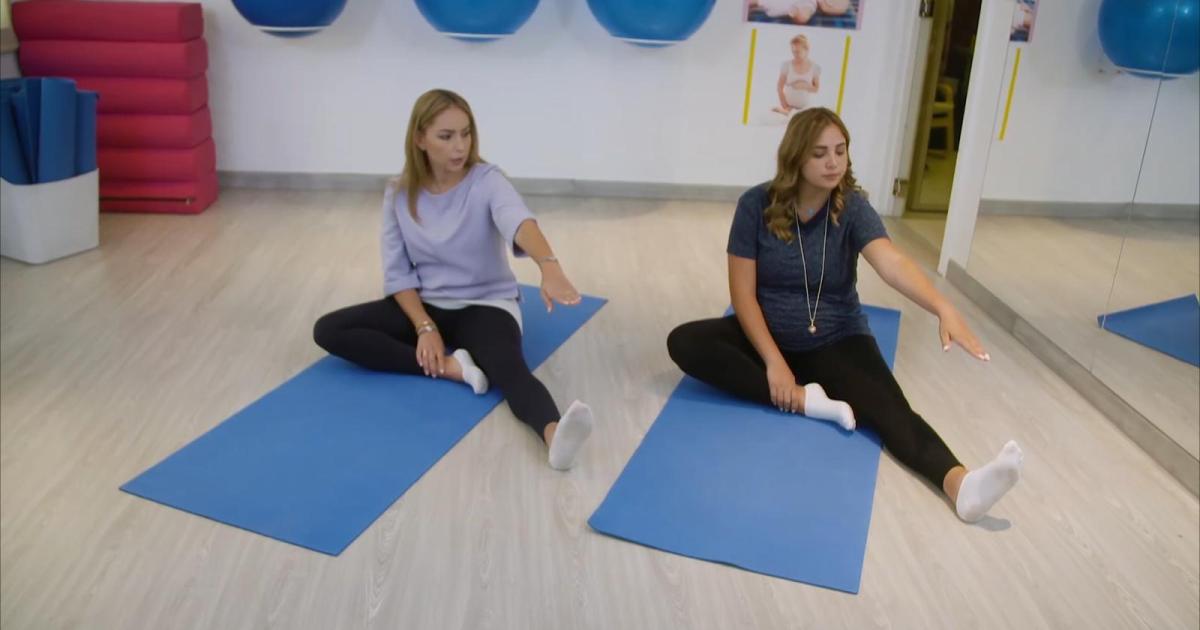play videoplay video
Video duration 03 minutes 49 seconds 03:49
Muscle separation is a common condition in pregnant women. What is it and how can it be confronted?
To answer this question, Dr. Klaus Dobek explained that when the fetus grows in the uterus, it is normal for the abdominal muscles to expand and not stay in place. Because the fetus needs more space.
The head of the German Association of Obstetricians and Gynecologists added, “In addition, hormones work to enhance the expansion of connective tissues during pregnancy.”
Stretch the rectus abdominis muscle
One of the results of these operations is the expansion of the rectus abdominis muscle, which extends from the rib cage through the abdominal wall to the pubic symphysis. This muscle does not return to its original state even after birth. Because it takes some time, and this also applies to the abdominal muscles.
Sometimes tight abdominal muscles can be observed after childbirth. The middle line, that is, the band located between the muscle strands, swells, and there is a visible gap. This band is connected by connective tissue, and it is called the “linea alba.” Its width is usually less than 2 cm or even 2 cm.
If this gap widens after pregnancy, then this condition is known as “muscle separation.” The extent of the widening is related to many factors, including the woman’s height, the size of the fetus, multiple pregnancies, as well as the training state of the muscles.
In the case of mild muscle separation, it usually does not cause any symptoms; The gap often narrows in the months following birth. Doubek added: “Many women may continue to suffer from mild muscle separation for a year after giving birth, and from a medical standpoint this does not require surgery.”
But the matter seems different when there is a hernia in the upper abdomen or an umbilical hernia along with muscle separation; Because the obvious muscle separation enhances the hernia, in addition to the presence of a gap in the abdominal wall, which expands over time, which leads to the risk of fatty tissue from inside the abdomen or the small intestine being blocked, therefore this gap should be closed through intervention. Surgical.
Strengthening the abdominal muscles
Women can avoid such situations by strengthening their abdominal muscles. Because it reduces cases of muscle separation. Ola Henscher, a physiotherapist and member of the German Society of Obstetrics, Gynecology and Urology, explained: “It is important to do some exercises during pregnancy.”
When there are no complications during pregnancy, endurance exercises and appropriate muscle strengthening exercises should be performed for 150 minutes per week. The German physiotherapist added: “Pregnant women often exaggerate in exercising, but what is important is to prepare the body for the birth process and the subsequent period.”
Pregnant women must strengthen their abdominal muscles by performing appropriate exercises during pregnancy and after childbirth. The word “appropriate” here is linked to two factors, the first of which is that the appropriate exercise is chosen, and the second is that the intensity of the exercise is matched with the condition of the body. Attention should be focused on muscle hypertrophy training in order to increase the thickness of the muscle fibers by increasing their intensity, and thus muscle strength increases, which is very necessary during pregnancy; Because the weight of the fetus increases during
pregnancy, which constitutes a burden on the mother’s body.
Plank
The plank exercise is considered an appropriate exercise during pregnancy. The pregnant woman focuses on the hands and feet, or simply on the elbows and knees, or sitting in an upright position and tilting the upper body back.
Women can begin performing simple exercises immediately after giving birth, such as deep exhalation in the therapeutic position of lying on the stomach, and in the meantime, pillows should be placed under the abdomen so that the load on the lower back area is reduced and no pressure is placed on the chest.
“After a natural birth, the recovery cycle can begin by performing appropriate exercises as early as three months after birth,” Hensher explained. Here we can rely on exercises that focus on the hands and feet or the plank exercise. It is also important that the exercises are performed under the supervision of a midwife or physical therapist.
Source: German

